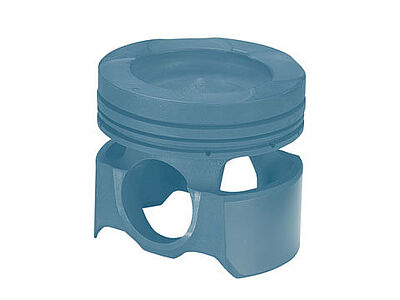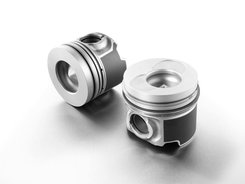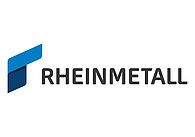Pistons

During the operating cycle of a combustion engine, the energy bound in the fuel is converted into heat and pressure in the cylinder in a very short space of time. This process is explosive in nature. It causes the temperature and pressure...
Function
 During the operating cycle of a combustion engine, the energy bound in the fuel is converted into heat and pressure in the cylinder in a very short space of time. This process is explosive in nature. It causes the temperature and pressure values in the cylinder to rise very significantly in fractions of a second.
During the operating cycle of a combustion engine, the energy bound in the fuel is converted into heat and pressure in the cylinder in a very short space of time. This process is explosive in nature. It causes the temperature and pressure values in the cylinder to rise very significantly in fractions of a second.
The piston is a moving part of the combustion chamber. It is responsible for converting the energy released during the combustion process into mechanical work. The piston also performs a number of other important tasks:
- It seals the combustion chamber
- It guides the connecting rod (in trunk piston engines)
- It dissipates the heat generated in the combustion chamber
- It supports gas exchange (by means of gas suction and emission)
- It supports mixture preparation with a special piston surface design on the combustion chamber side which is known as the piston crown.
- It houses the sealing elements (piston rings).
Areas
In terms of its basic structure, the piston is a hollow cylinder which is sealed on one side. It consists of the following areas:
- Piston crown with ring belt,
- piston hub and
- shaft.
The piston crown transmits the compression forces generated during the combustion of the fuel/air mixture to the crankshaft via the piston hub, the piston crown and the connecting rod.
Functionality of a piston
The piston is exposed to various forces. When the engine is running, it moves up and down constantly in the cylinder. At each reversing point it is braked sharply and then accelerated again.This generates mass inertia forces which act on the piston. Together with the forces generated from the gas pressure, they form the piston force.
The piston force is transmitted to connecting rod and the crankshaft. However, the connecting rod is only precisely vertical at the upper and lower reversing points (known as dead centre). The inclination of the connecting rod pushes the piston to the side, i.e. against the cylinder wall. The extent of this force (also known as lateral force or normal force) changes direction several times during an operating cycle. It is determined by the piston force and the angle of the piston crown in relation to the connecting rod axis. The lateral force can be derived from the parallelogram of forces.
Every piston is fitted with piston rings. The piston rings must seal off the combustion chamber and the working space from the crankcase and strip the oil from the cylinder walls, thereby regulating oil consumption. They must also dissipate the heat absorbed by the piston during combustion to the cooled cylinder barrel.
Environmental protection
The design, build and material composition of the pistons used in modern combustion engines are a significant contributing factor in achieving low-emission and complete combustion. Furthermore, modern pistons reduce friction and oil consumption by design. In so doing, they make an essential contribution to the protection of the environment and the preservation of resources.
Depreciation
In order for the piston to reliably perform its task for the entire service life of the vehicle, only fuels with the octane rating prescribed by the manufacturer may be used in petrol engines. This also applies for spark plugs, which also have to be inspected on a regular basis. If biofuels are used, oil must be changed at much more frequent intervals.
Moreover, during inspection and maintenance work, care must be taken to ensure that only engine oils approved by the engine manufacturer are used. The oil pressure must also be checked. If the oil pressure is too low, the oil pump could be worn, the oil filter might be soiled, the overpressure valve in the oil pump could be faulty or the oil may have become diluted. The driver should also check the oil level at regular intervals and top up if necessary.
Downloads
Here you can find all available downloads for the topic "Pistons":
All file downloads:



